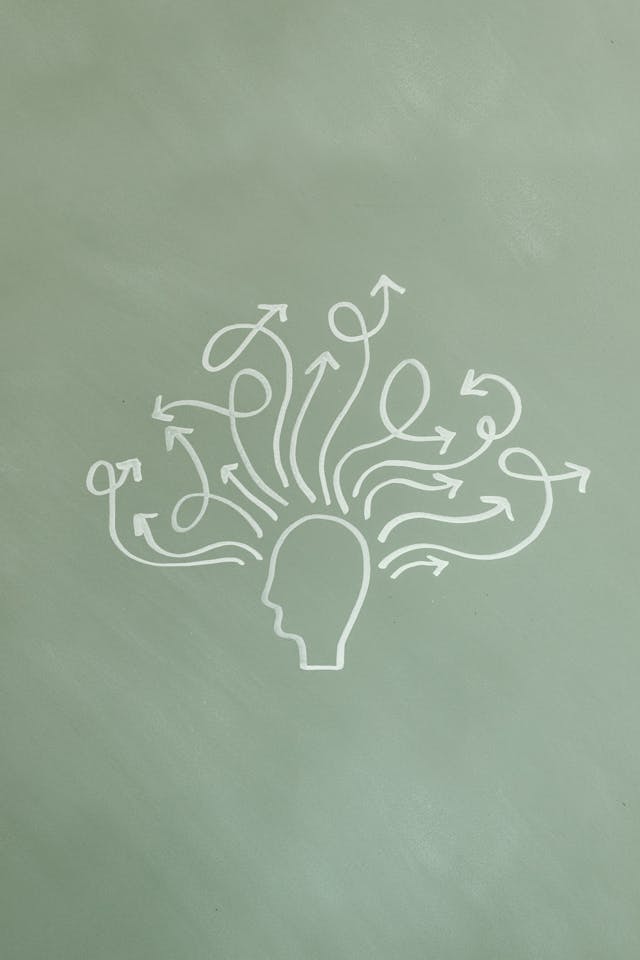
Discover why willpower alone isn’t enough and the simple daily shifts that work. Different from what most of us believe, our habits, moods, and reactions don’t come from sheer willpower. They emerge from ongoing chemical and electrical rhythms in our brains and bodies. Trying to “just say no” to cravings or “just calm down” when we’re angry often backfires because these impulses run on auto-pilot loops of hormones and neural patterns.
So, the good news? Our brains can rewire themselves. By weaving simple, science-backed practices into your daily life, you can steer those loops toward healthier, also calmer, more connected versions of yourself, no matter which habits you’re targeting.
Why Willpower Isn’t Always Enough
Every habit follows a three-step loop—cue → routine → reward—and our biology sets the default settings:
- Built-In Rhythms
Daily cycles of cortisol, melatonin, dopamine and other chemicals shape your energy, stress levels, and cravings. At the same time, brain-wave patterns guide your attention and emotions. - Automatic Pilots
Research shows many decisions start unconsciously before you even notice. That doesn’t mean you’re powerless, but it does mean sheer willpower often fights an uphill battle against these deep-rooted loops.
How Your Brain Rewires Itself
Neuroplasticity: Your Built-In Change Engine
Neuroplasticity is simply your brain’s ability to grow new connections when you repeat a behaviour. Keeping that new action in place makes it easier and more natural each time.
Hacking the Habits Loop
- Keep the Cue & Reward
Spot the trigger (cue) and the payoff (reward) you’re already getting. - Swap the Routine
Plug in a healthier action that still delivers the reward you crave.
Three Strategies Any Habits-Changer Can Use
1. Mindful Micro-Breaks
What to Do:
Choose a moment you know will come up every day, perhaps right after you sit at your desk, when you wake up, or before you check your phone. Pause for as little as two minutes and also focus on your breath or sensations in your body.
Why It Works:
Bringing unconscious urges into conscious view gives you a choice. Over time, these tiny pauses strengthen the parts of your brain that notice urges, rather than just react to them.
How to Apply It:
- If one of your habits is evening snacking, take your mindful micro-break as soon as dinner ends.
- If you’re trying to grab your phone less, pause for two minutes before unlocking it.
2. Laser-Focused “If-Then” Plans
What to Do:
Pick one from your habits that you want to change and write exactly what you’ll do when the trigger hits:
“If I feel [specific cue], then I will do [new, simple action].”
Why It Works:
Deciding in advance automates the switch, so your brain doesn’t have to waste energy deciding in the moment.
How to Apply It:
- Cue = 3 PM slump → Action = stand up, stretch for 30 seconds, drink a glass of water.
- Cue = scrolling social media first thing → Action = open your journal and write one line.
3. Community-Powered Momentum
What to Do:
Find one way each week to do something for others: volunteer, help a neighbour, or even coach a friend.
Why It Works:
Prosocial acts release oxytocin(the “bonding” hormone)and spark a positive feedback loop of connection and motivation. When you feel part of something bigger, sticking to your own goals becomes easier.
How to Apply It:
- Love fitness? Join a local walking group or lead a friend through a quick workout.
- Passionate about pets? Offer to dog-sit or volunteer at an animal shelter.
Putting It Into Practice Today
- Pick Your Habit & Cue: What pattern do you want to change? What reliably triggers it?
- Write Your If-Then Plan: Be super specific, no vague goals.
- Choose a Micro-Break Moment: Slot in a daily 2–5 minute mindfulness pause tied to your cue.
- Line Up One Act of Service: Block time this week for that community or friend-help activity.
- Track a Tiny Win: At the end of the day, note one success(no matter how small)to reinforce your progress.
Your biology may set the stage, but it doesn’t write the script. By slotting in mindful pauses, clear “if-then” decisions, and community connection, you harness your brain’s natural wiring for lasting change. So start now with one small step, and watch it build momentum toward the person you want to become.
References
- The Libet Experiment & Question of Free Will, Sprouts Schools (Feb 26, 2024)
- Mindfulness Meditation and Brain Structure, PMC6312586
- Implementation Intentions and Goal Achievement, Gollwitzer & Sheeran (Adv. Exp. Soc. Psychol., 2019)
- Oxytocin and Prosocial Behaviour, Frontiers in Psychology (Jan 2023)
FitByNando



